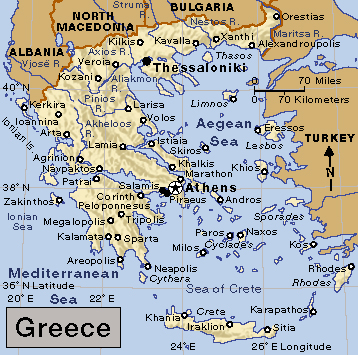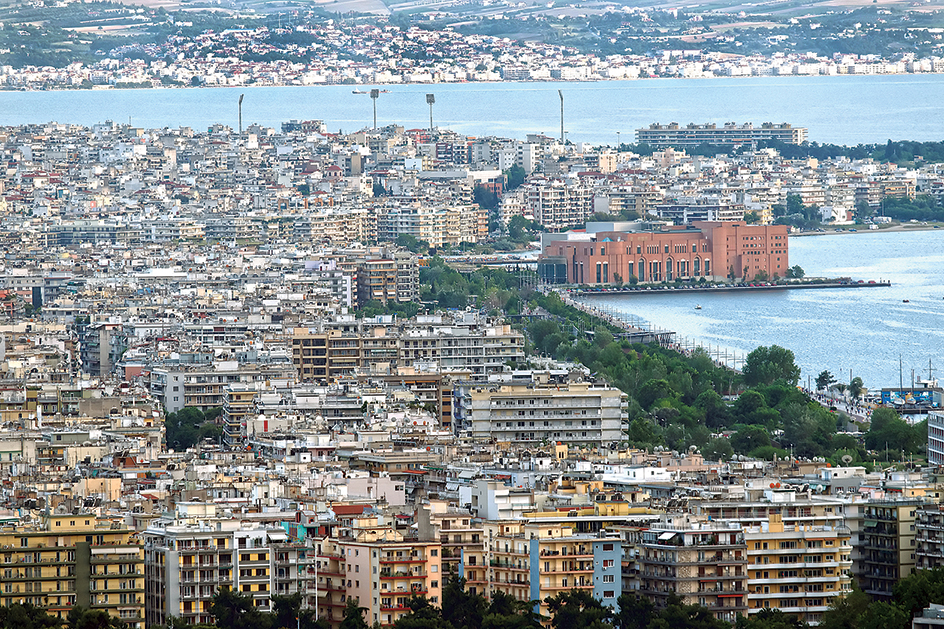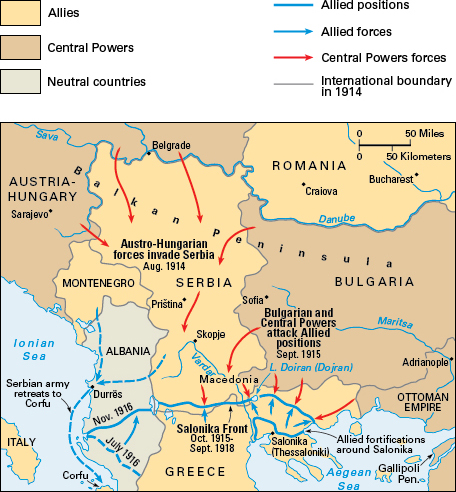Thessaloniki << `thehs` ah law NEE kee >> (pop. 319,045; met. area pop. 802,392) is Greece’s second largest city, after Athens, and the capital of the country’s Macedonia region. The city, also called Salonika, is a port on the Gulf of Thermai.

Thessaloniki is a leading industrial center and has a modern business section. Its industries include chemical and steel plants, flour mills, foundries, shipyards, and textile mills that manufacture cotton, woolen, and silken goods. The city also produces tobacco, soap, and leather products. The port of Thessaloniki, opened in 1901, is a major Balkan outlet to the Aegean Sea. Chief exports are chemicals, cotton, fruits and vegetables, manganese and chromium ores, and tobacco. A university and several research institutes are located in Thessaloniki.

Cassander, king of Macedonia, founded Thessaloniki in 316 or 315 B.C. by uniting the town of Therma with a number of nearby villages. He named the city after his wife. Thessaloniki has been ruled by almost every neighboring country. The Muslims invaded in A.D. 904 and sold 22,000 people into slavery. From 1430 until 1912, the city belonged to the Ottoman (Turkish) Empire. It fell to Greece in 1912 in the First Balkan War.
During World War I (1914-1918), the Allies used Thessaloniki as a base for campaigns. A fire destroyed the business section in 1917, but the area was rebuilt. The Germans occupied Thessaloniki from 1941 to 1944 during World War II, and it suffered considerable damage. Greek patriots freed the city in October 1944. The city’s industries have expanded since the war, and new factories have been built.

